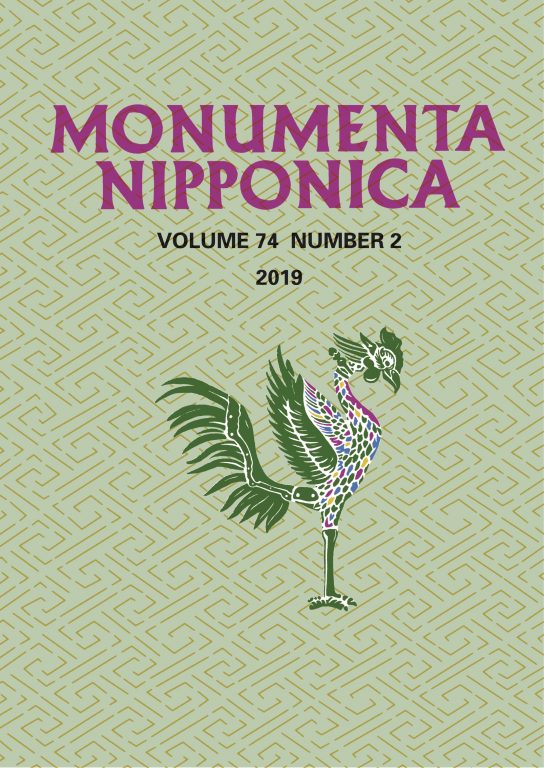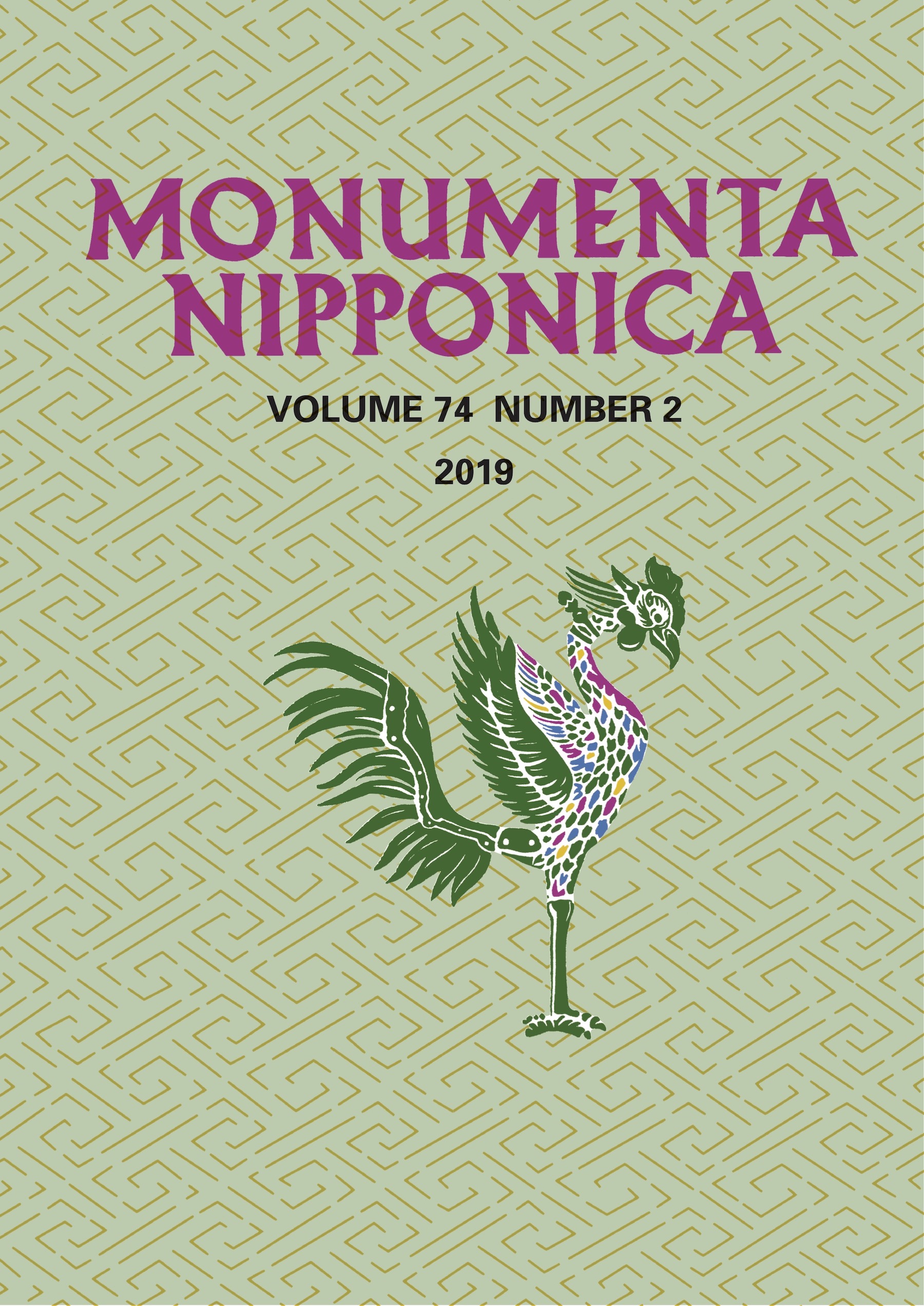Reflections on the Man’yōshū EraFujiwara no Shunzei
Translated by Malgorzata Karolina Citko and Kei Umeda
MN 74:2 (2019) pp. 201–209
To date, six texts of Man’yōshū jidaikō are known, none of which has been annotated. The earliest extant text, a scroll (kansusō 巻子装) from the Shiguretei Bunko, is believed to have been copied in the mid-Kamakura period by Reizei Tamesuke 冷泉為相 (1263–1328), a son of Fujiwara no Tameie 藤原為家 (1198–1275), based on a copy determined by Tamesuke to have been made by Kujō Motoie 九条基家 (1203–1280), one of the younger sons of Kujō Yoshitsune. The present translation is based on this Reizei-ke Shiguretei Bunkozō-bon 冷泉家時雨亭文庫蔵本. Two more Reizei-ke texts exist in the form of booklets (sasshi 冊子). The remaining three texts are Motoori Norinaga Kinenkanzō-bon 本居宣長記念館蔵本 from the Museum of Motoori Norinaga in Matsusaka 松阪, Mie Prefecture; Miyagi-ken Shiogama Jinja-bon 宮城県塩釜神社本 from the Shiogama 塩釜 Shrine, Miyagi Prefecture; and Zoku gunsho ruijūbon 続群書類従本, a modern printed edition based on a copy from the archives of the Kunaichō Shoryōbu 宮内庁書陵部 (Imperial Household Agency Bureau of Imperial Records). All three date from the Edo period and are probably derived from the Reizei-ke Shiguretei Bunkozō-bon. See Takeshita, “Kaidai,” p. 34. Throughout the footnotes and translation, we have used McCullough and McCullough, Tale of Flowering Fortunes, for translations of titles and ranks.

